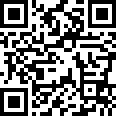The guide sleeve is an important part in the hydraulic support of the coal mining machinery industry. The hydraulic cylinder piston and the guide sleeve are a pair of friction pairs. If the dimensional accuracy is not high, the piston will cause friction due to friction and wear during long-term reciprocating operation in the hydraulic cylinder. The damage and loss of the auxiliary surface, especially the damage and loss of the working face of the guiding sleeve is more serious, and finally the hydraulic bracket can not work normally, so it is necessary to improve the geometrical precision of the guiding sleeve while improving the processing efficiency.
In the context of high-precision and high-speed development of CNC machine tools, how to ensure and improve the dimensional accuracy of the machined workpiece and the high-spindle precision of the machine tool spindle are the problems that designers need to face. With the rapid development of the domestic machine tool industry, high precision, High-efficiency CNC machine tools are increasingly favored by users. In recent years, there have been many types of CNC lathes on the market, such as twin-spindle, double turret, double-slide saddle, intermediate drive, etc. These machines are often effective in improving efficiency, but they have general effects in improving accuracy. The basic principle of the two-knife high-efficiency machine tool puts forward a new idea and new structure in improving the machining precision of the guide sleeve, and compares the structure with the existing structure.
1. Traditional machine tool lateral feeding mode and characteristics
The traditional CNC lathes are all single-turret configuration, the flat bed CNC lathe is equipped with a front turret, and the slant bed CNC lathe is equipped with a rear turret. Both axes are unidirectionally stressed when feeding in the X-axis direction. In recent years, the double-turret CNC lathes on the market, that is, the turrets are placed up and down. As shown in Figure 1, when machining the inner and outer circles simultaneously, the X1 axis is fed in the positive direction, and the X2 axis is also fed in the positive direction. The force is also a one-way force and is greater than the force of the conventional lathe spindle. Since the workpiece is deformed by the radial force, the deformation is larger as the distance from the clamping position is larger, and the positive cone is easily generated, and the cylindricity is poor, which also has a great influence on the life of the spindle bearing.
Figure 1 Traditional lathe workpiece stress state
2. The transverse feeding mode and characteristics of the opposite turning structure
The research on the turning structure has caused a fundamental change in the stress state of the traditional structure. On the basis of the existing double turret numerical control lathe structure, the feed direction of the upper turret is reversed and the X1 axis is fed in the negative direction. The upper knife tower is extended in the negative direction of the X1 axis, and the lower knife tower is fed in the negative direction of the X2 axis in the negative direction. As shown in Fig. 2, the opposite turning is characterized by firstly causing the upper and lower turrets of the workpiece to be extended. Most of the turning forces in the X-axis direction cancel each other out or even cancel completely. The radial force received by the workpiece is small and the deformation is small. The cylindricity of the workpiece is greatly improved. Secondly, the radial force of the spindle bearing is small, which makes the bearing life and bearing. The high rotation accuracy retention is greatly improved.
3. Application examples
According to the user's requirements, our company has developed the CK6156-2×2 double turret CNC lathe. The machine is a four-axis four-linkage versatile turning machine. The upper turret mainly turns the inner hole, the inner hole groove, the inner inclined surface and the inner circular surface. Inverting the inner corner, the lower turret mainly turns the outer circle, the outer circular groove, the outer inclined surface, the outer circular surface, and the outer outer angle. In order to avoid the large radial force generated by the upper and lower turret turning in the same direction, the upper turret extension X1 is adopted. The axis feeds in the negative direction, and the lower turret extends in the negative direction of the X2 axis, thereby reducing or canceling the radial force generated by the X-direction feed and improving the dimensional accuracy of the workpiece. The shape of the machine is shown in Figure 3.



